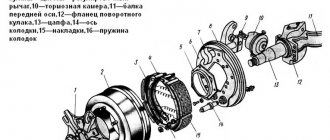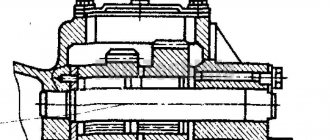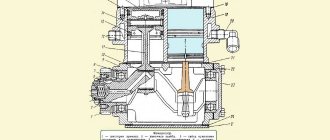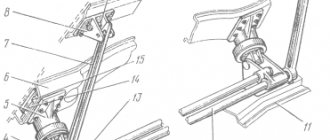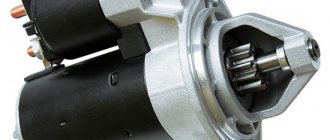- home
- Media center
- Articles
- How to raise the cab on KamAZ
Menu
- News
- Articles
- Video materials
- Photo materials
- Publication in the media
- 3D tour
24.01.2022
Everyone in the post-Soviet space knows the Kamaz brand, because the truck has a lot of positive qualities. This number of advantages is achieved, among other things, by the cabover placement of the power unit. Due to this solution, the overall length is reduced, the usable area of the body is increased, and good visibility for the driver and maneuverability of the machine are guaranteed.
The answer to the question of how to raise the cab on a KAMAZ depends on the model of the dump truck. There are some difficulties in this design, since access to the engine compartment is difficult. To gain access to the engine system, you need to tilt the cab. To enable this to be done with a minimum of effort, the machine has two hydraulic pumps installed.
Raising and lowering the KamAZ-5490 cab.
Raising and lowering the KamAZ-5490 cab.
Other notes on the operation of the KAMAZ-5490 vehicle:
Raising and lowering the cab.
To raise and lower the cabin the following are used:
- hydraulic cabin lift pump installed on the starboard side behind the cabin;
- electric pump for the cab tilting mechanism (depending on the vehicle configuration, it may be absent).
The position of the control handle for raising and lowering the cabin is indicated on the plate located on the pump body.
Pump plate.
During operation, it is necessary to ensure control of the oil level in the hydraulic lift system. The oil level should be between the marks indicated on the pump dipstick mounted in the pump reservoir housing.
Before lifting the cabin.
- The cab tilt area must be clear.
- Brake the vehicle using the parking brake system.
- Set the gear shift lever to neutral.
- Turn the instrument and starter switch key to the “O – everything is off” position.
- Turn off the additional heating (cab air heater) or air conditioning.
- If you need to start the engine after tilting the cab, turn the instrument and starter switch key to the “Drive position”.
- Secure or remove all loose objects from the cab. Close all doors, drawers and compartments in the cabin.
- Install wheel chocks to prevent the vehicle from rolling away.
- Check that the towing forks have been removed.
- Raise the front trim panel.
Raising the cabin.
Control of raising and lowering the cabin.
1 - pump; 2 — control knob; 3 — pump handle; 4 - dipstick; 5 - electric pump; 6 — electric pump control button; 7 – battery.
- Disable the cab tilt lock: press the top cab tilt lock switch located on the instrument panel. The control LED built into the switch will light up.
- Set control knob 2 on pump 1 to the arrow up position, turning it clockwise until it stops.
To raise the cab:
- install the mounting blade into the pump handle 3, and by pumping it, raise the cabin;
- when installing the electric pump: press the non-fixed button 6, the cabin rises.
The hydraulic locks open automatically when the pump is running.
Prevention of accidental lowering of the cabin is ensured by the design of the hydraulic cylinder.
Lowering the cab.
- Set control knob 2 on pump 1 to the downward arrow position by turning it counterclockwise until it stops.
To lower the cab:
- pump pump handle 3 with a mounting spatula;
- When installing the electric pump, turn on the electric pump control button 6.
- Lower the cab until the hydraulic locks of the rear cab suspension are activated.
For vehicles equipped with a transmission with a telescopic drive (except for automatic transmissions), after lowering the cab, the lock of the telescopic elements must snap into place to ensure a rigid connection between the lever and the rod. If the lock does not engage, sharply push the gear shift lever forward until the telescope lock engages.
After lowering the cab, turn on the cab tilt lock: press the cab tilt lock switch at the bottom (to protect against accidental tilting of the cab). The control LED built into the switch goes out.
If the cab is not locked, the warning light comes on
locking the driver's cabin. An unlocked cab poses a risk to the operational reliability and safety of the vehicle.
At the end of the hydraulic cylinder stroke (100 mm until the cabin is completely lowered), the cabin accelerates lowering under its own weight.
Attention!
- There is a risk of injury when lowering the cab quickly - do not hold the cab with your hands.
- You can only be under the cab after it has been completely tilted.
- With the cab overturned and the engine running, do not touch hot or moving engine parts (for example, exhaust manifold, fan).
- Start driving only with the driver's cabin locked; the warning light should go out.
Models Neo and 65117
The method for raising the cab on a KamAZ Neo is no different from the method described above. This is due to the fact that the model is an improved version of the 5490. The wheelbase is increased by 200 mm, and there is an optional 400-liter tank. Improvements have also been made to the transmission. But the movement mechanism has not changed, so all operations are performed in the same way. The only important point is that the machine is equipped with air conditioning, which must be turned off before carrying out manipulations.
Also, novice drivers often ask how to raise the cab on the KamAZ-65117 so that the hydraulic mechanism does not jam. This is a fairly large cabin, which has a berth and three seats. Fundamentally, the lifting process is no different from the 5490 model. First, the car is put on the handbrake; to securely fix the car, it is better to use wheel chocks.
How to raise the cab on KAMAZ 65115 video
Repair) We raise the Kamaz cab by 5 cm.) The cabin elevator is due to the subsidence of Chinese springs from the hova)
How to raise/lower the body on a KamAZ
Review of restyled KamAZ 65115
How to lift the body of a Kamaz dump truck 6520
Unloading Kamaz dump truck
KamAZ 65115 (Euro-4) agricultural tractor, 3-sided. without sleeping place video review
2017 KAMAZ-65115 Dump truck. Review (interior, exterior, engine).
Kamaz 65115 cylinder
Review of the KAMAZ 65115 dump truck, born in 2007
How to raise the cab on KAMAZ 43118
Repair) We raise the Kamaz cab by 5 cm.) The cabin elevator is due to the subsidence of Chinese springs from the hova)
Review of restyled KamAZ 65115
Cabin structure of KamAZ 43114
A truthful review from drivers to the designer who invented the air suspension for the KAMAZ cab)))
Kamaz, cabin repair
Design and maintenance of the KAMAZ 4310 vehicle part 4
Euro-1 cabin on a KAMAZ dump truck
Kamaz 43118, new, 2012 in Chelny
Cabin overview KamAZ 65117
- KAMAZ repair head video
- Ignition system of the KAMAZ 5511 vehicle
- Repair kit for KAMAZ steam generator unit of a new model
- Installation of MAZ engine on KAMAZ video
- All-wheel drive KAMAZ trucks
- Grinding in the KAMAZ valve
- Three KAMAZ trucks with money
- List of works for 1 KAMAZ 43114
- Production of Oka at KAMAZ
- KAMAZ enterprise characteristics
- New KAMAZ gearbox plug
- KAMAZ ratchet winch with electric drive
Types of pumps and their applications
On trucks of the Kama Automobile Plant, regardless of modification. plunger type pumps are installed. They are distinguished by their reliability and unpretentiousness to ambient temperature.
The pumps of the KamAZ cab tilting mechanism are manually driven. This allows you to rollover when the power plant is not working.
All pumps are divided into two types:
- Single-circuit. Used only for the mechanism for raising and lowering the cabin. They are equipped with one spool that distributes oil pressure in the system;
- Dual-circuit. Used on vehicles with a spare wheel located behind the cab. They have two spools and two control handles. The operating principle of both spool valves is identical.
ATTENTION: The Kama Automobile Plant equips trucks with pumps from two manufacturers:
- PRT – made in Serbia;
- BAGU – produced in the Republic of Belarus.
How to raise the cab of KAMAZ 5511
Repair) We raise the Kamaz cab by 5 cm.) The cabin elevator is due to the subsidence of Chinese springs from the hova)
How to raise/lower the body on a KamAZ
Kamaz 5511 agricultural worker. 2001. Replacing the cabin with a new one with connection
Euro-1 cabin on a KAMAZ dump truck
Everyday life of KAMAZ drivers: Lifting the body and the sound of the v8 engine
Kamaz, cabin repair
How to raise (open) the cabin on a Jak 1020 K
How did I make the body rise at idle and not fall? Kamaz 5511
Replacing the trim in the cab of a Kamaz 5511 car
- Nissan Navara trunk carpet
- Engine temperature sensor Nissan March
- The injector lights up on the Opel Corsa
- CV joint Ford Mondeo 3 front left
- What problems does Subaru have?
- Regulations for changing the oil in the Ford Mondeo 4 engine
- Door for Ford Explorer 2013
- How to replace timing chains on a Hyundai Grand Starex
- Automatic oil Toyota Mark 2
Pump operating principle
When the plunger pump handle moves upward, the piston rises along the tube. Under the influence of vacuum, oil enters the piston section, lifting the intake valve ball. When the handle moves down, the piston presses on the oil located in the piston section. Under oil pressure, the intake valve ball is pressed against the seat and disconnects the channel connecting the section to the oil tank.
After closing the inlet valve, the pressure in the piston section of the KamAZ cab pump increases. When the required value is reached, the pressure compresses the exhaust valve spring. The exhaust valve ball comes off the seat and releases oil under pressure into the pipeline leading to the hydraulic cylinder. Thus, the rhythmic movement of the handle up and down allows you to pump oil pressure into the hydraulic cylinder.
Raising and lowering the cab
A pump mounted on the vehicle frame is used to raise and lower the cab Depending on the model and configuration of the vehicle, it is possible to install a tipping pump of various models. The position of the control handle for raising and lowering the cabin is indicated on the plate located on the pump body (see Fig. Plaque options).
During operation, it is necessary to ensure control over the oil level in the hydraulic lift system. The oil level should be between the marks indicated on the pump dipstick mounted in the pump reservoir housing.
Raising the cab to the first position provides access to the engine during its maintenance.
Before raising the cab:
1. The cab tilting area must be free. 2. Brake the car with the parking brake system. 3. Set the gear shift lever to the neutral position (for the ZF 9S1310 gearbox, to the neutral middle position for engaging 3rd and 4th gears). 4. Turn off the additional heating (cabin air heater) or air conditioning. 5. Turn the key of the instrument switch and starter switch to position “0” - “Everything is off”. 6. Lower the steering column to the lower position (to prevent damage to parts of the adjustable steering column with pneumatic control). 7. Secure or remove all loose objects from the cab. Close all doors, drawers and compartments in the cabin. 8. Install wheel chocks to prevent the vehicle from rolling away. 9. Check that the towing forks have been removed. 10. Raise the front trim panel.
Cabin lift
1. Set the control knob on the hydraulic cab lift pump (see Fig. Tilting mechanism pump), depending on its model, to the CAB LIFT or UP ARROW position and, shaking the pump handle with a mounting blade, begin lifting the cab.
Tipping mechanism pump 1 - control handle; 2 — pump handle; 3 - pump probe
2. To prevent accidental lowering of the cab, secure the limiter posts with a locking pin. Remove the locking pin from the transport position (from the hole in the lower pillar) until it touches the upper pillar (see Fig. Cab tilt limiter).
Cabin tilt limiter 1 – upper stand; 2 – lower stand; 3 – locking pin
3. While pumping the pump handle with a mounting blade, continue lifting the cabin until the holes in the lower and upper pillars coincide. If these holes coincide, stop raising the cabin. For cabins with hydraulic locks, the hydraulic locks open automatically when the pump is running. For vehicles equipped with a gearbox with a telescopic drive, the lock of the telescopic elements opens automatically when the cab is raised. 4. Secure the limiter posts with a locking pin to prevent accidental lowering of the cab.
Attention! When the engine is running and the cab is raised, the cooling system fan can be turned on automatically. It is strictly prohibited to carry out any work in the fan area while the engine is running.
Design and operating principle of a hand pump
The KamAZ cab lift pump, the design of which is shown below, may differ depending on the modification of the vehicle.
The pump consists of the following components:
- Inlet valve. Made in the form of a ball installed inside a tube. When oil is sucked in, the ball rises above the seat, allowing liquid to pass through;
- Exhaust valve. It consists of a ball pressed to the seat by a spring. The valve opens when the required pressure is reached;
- Piston section. It consists of a cylinder in which a piston moves, connected to a drive handle. The piston is equipped with a rubber seal. This prevents oil leakage from the pump;
- Oil container. The oil tank is made in the same housing as the pump or is attached to it. It is connected to the piston section through the inlet valve;
- Spool. Necessary to control the system when turning the handle to a certain position. The spool directs oil pressure to the required input of the hydraulic cylinder;
- Handle for driving the piston section. The pumps are equipped with a handle connected to a piston and fixed to the device body.
IMPORTANT: To reduce physical effort when working with the KamAZ cab lift pump, a lever is installed in the handle.

